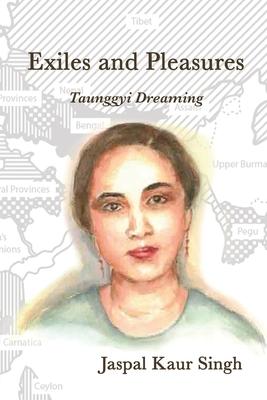Exiles and Pleasures: Taunggyi Dreamer, reflecting themes of trauma, memory, psychic fragmentation and survival, echoes the poet's own multiple migrations as a member of the Sikh diaspora-from the mountains of the Shan States in Taunggyi, Burma, to the subtropical and semi-arid capital of India, New Delhi, to the hot deserts of Baghdad, Iraq, and eventually to the cold shores of Lake Superior in the Upper Peninsula of Michigan in the United States of America. The poetry, inspired by Singh's exile from her birth country, Burma, after the military coup of 1962, to her resettlement as a stateless citizen in her ancestral home in India during her teen years and eventually, her arrival in her thirties to the U.S. as a resident alien, is fueled and driven by ancestral female voices-grandmothers and mother-and especially by the poet's own hybrid ethos through woman-centric poetics. It is the community of women, in domestic and public spaces of the home and the world, in India/Burma and in the Indian diaspora, particularly the Sikh, that defines Singh's singularly creative style. She, too, like many diasporic writers, uses hybridity to create an aesthetic that, although not unique in terms of postcolonialism, is particularly hers in that, as a tricultural transplant, her writing vividly reveals the pluralistic ethos of an exile and a diasporic. Like George Lamming, Singh highlights not only about the trauma of dislocation, but also about the "pleasures of exile" through her splintered poetics.

Exiles and Pleasures: Taunggyi Dreamer, reflecting themes of trauma, memory, psychic fragmentation and survival, echoes the poet's own multiple migrations as a member of the Sikh diaspora-from the mountains of the Shan States in Taunggyi, Burma, to the subtropical and semi-arid capital of India, New Delhi, to the hot deserts of Baghdad, Iraq, and eventually to the cold shores of Lake Superior in the Upper Peninsula of Michigan in the United States of America. The poetry, inspired by Singh's exile from her birth country, Burma, after the military coup of 1962, to her resettlement as a stateless citizen in her ancestral home in India during her teen years and eventually, her arrival in her thirties to the U.S. as a resident alien, is fueled and driven by ancestral female voices-grandmothers and mother-and especially by the poet's own hybrid ethos through woman-centric poetics. It is the community of women, in domestic and public spaces of the home and the world, in India/Burma and in the Indian diaspora, particularly the Sikh, that defines Singh's singularly creative style. She, too, like many diasporic writers, uses hybridity to create an aesthetic that, although not unique in terms of postcolonialism, is particularly hers in that, as a tricultural transplant, her writing vividly reveals the pluralistic ethos of an exile and a diasporic. Like George Lamming, Singh highlights not only about the trauma of dislocation, but also about the "pleasures of exile" through her splintered poetics.